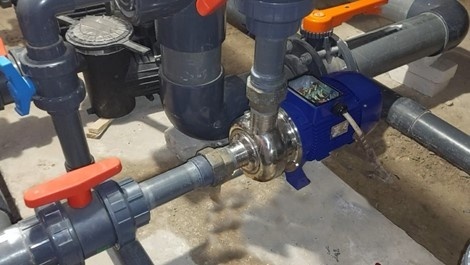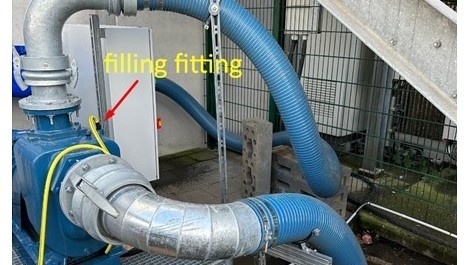December 2024 — Prom-nasos.com.ua
December 13, 2024
Pumps for swimming pools

Swimming pool pumps are conventional centrifugal pumps. The only difference is that they usually have an integrated coarse filter (see Fig. 1), the so-called ‘hair filter’, in their housing.
In general, the prefix ‘pumps for water supply, heating, well or swimming pool’ is determined by the system or place where the pump will be used. Accordingly, the same pump can be used in different systems. That is, no one prohibits the use of a water supply pump in a pool circulation system, as long as it meets the required parameters.
Pumps used in swimming pool filtration and circulation systems must provide sufficient water supply, which depends on the volume of the pool. The pressure created by the pump is usually in the range of 1 to 2 atm. This pressure is quite sufficient both for circulation and to overcome the resistance of the filtering system (sand filters).
Since the water in the pool is disinfected, it contains a small concentration of sodium hypochlorite, so the material of the flow part should be made of plastic or stainless steel.
The absence of an integrated filter can be easily compensated for by using a conventional coarse filter in the suction line. When using pumps with an open impeller (see Fig. 2), a filter can be dispensed with, as this type of impeller does not clog, and impurities and dirt are further stopped by the sand filter and do not re-enter the pool.
Our specialists have successfully replaced a classic plastic pool pump with a centrifugal stainless steel pump.
Since the pump to be replaced had failed due to a motor winding burnout, a protection and control panel was also installed to control the new pump and the protection parameters were adjusted accordingly.
Pump that has failed
New pump
December 5, 2024
Problems when starting a self-priming pump and solutions

Self-priming pumps with a pre-filling chamber can operate without installing a check valve at the end of the pipe. These pumping units are convenient for unloading tanks with oil products, diesel fuel, petrol, oil and other liquids.
The ability to suck in liquid is ensured by the built-in check valve and the design of the pump casing, which stores a certain level of liquid to start the pump. However, for the first start, there still needs to be liquid in the working chamber, so you will have to fill it up the first time. For this purpose, a filler connection is provided on the casing (see Fig. 1 item 4, Fig. 2).
The table below shows typical faults that may occur during operation of a centrifugal self-priming pump and how to resolve them.
2 posts





























































































































